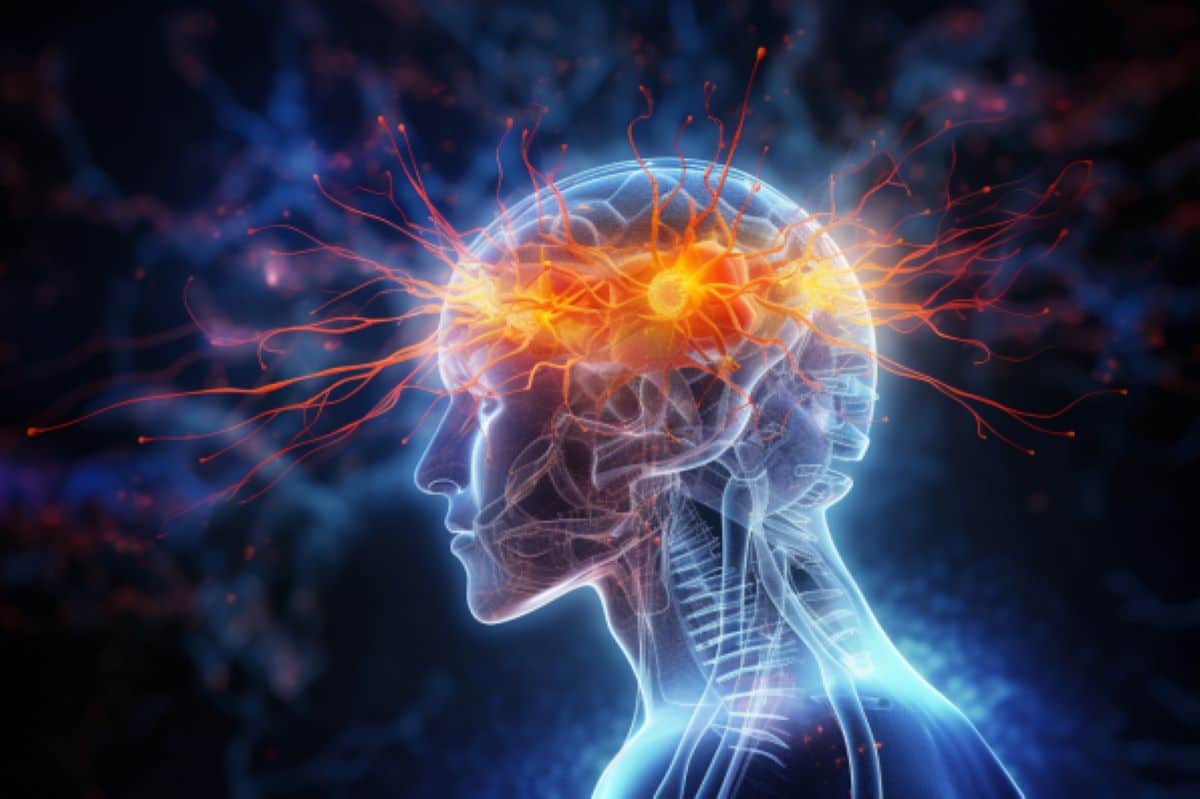Summary: A new study pinpointed a potential brain mechanism linked to sudden unexpected death in epilepsy (SUDEP), significantly advancing our understanding of this tragic phenomenon.
By examining the post-seizure phase in individuals with uncontrollable epilepsy, researchers identified a correlation between the amygdala, a brain region associated with emotion processing, and postictal apnea, a perilous pause in breathing following a seizure.
The study elucidates how seizures originating in specific amygdala subregions might suppress both breathing and the crucial alarm signal of “air hunger,” potentially through novel connections to the brainstem, which regulates responses to blood CO2 alterations.
With a sharper focus on these amygdala-brainstem links, researchers forge a vital pathway toward demystifying SUDEP, revealing robust avenues for future exploration, preventive measures, and targeted treatments.
Key Facts:
- Amygdala Involvement: Seizures originating in the amygdala subregions can suppress breathing and the vital “air hunger” alarm after the event, potentially elucidating a key mechanism in SUDEP.
- Postictal Apnea: This research emphasizes that some individuals who experience postictal apnea might lose their primal urge to breathe, and it’s hypothesized that the brain may not effectively respond to escalating CO2 levels during apnea episodes.
- Innovative Technique: Employing a pioneering method that melds electrical stimulation and functional MRI, researchers spotlighted previously unidentified connections between the amygdala and brainstem, opening new avenues in understanding and potentially mitigating post-seizure breathing suppression.
Source: NIH
A research team supported by the National Institutes of Health has identified a part of the brain that may be associated with breathing failure following a seizure in people with severe epilepsy that cannot be controlled with medication. The condition, known as sudden unexpected death in epilepsy (SUDEP), is the leading cause of death in this patient population.
The new findings, by researchers at the University of Iowa, Iowa City, and published in JCI Insight, may play a critical role in understanding SUDEP, for which causes are not well-explained.

Most cases of SUDEP are thought to be due to loss of breathing that occurs after a seizure ends, known as postictal apnea. The study found that individuals who experience postictal apnea lose a sense of “air hunger” – the primal urge to breathe – or alarm, suggesting that the brain may be unable to detect and respond to rising carbon dioxide (CO2) levels in the blood when the apnea occurs.
To examine this, researchers enrolled 12 adults and eight children with epilepsy that could not be controlled with medications, and who were undergoing intracranial electroencephalography (iEEG) in an attempt to control their seizures.
iEEG involves placing electrodes inside the skull to record electrical activity from the brain and to locate where seizures are starting. Using direct electrical stimulation, the team induced seizures in the participants under medical supervision to examine forebrain control of breathing and apnea.
They found that seizures that originate in the amygdala, a brain region primarily involved in processing emotion and fear, can cause postictal apnea and identified the amygdala subregion involved in prolonged breathing loss.
Only five of the 20 participants developed postictal apnea, suggesting that some individuals with uncontrolled seizures may be more prone to the condition.
The scientists then used a technique combining electrical stimulation with functional MRI to identify novel connections between the amygdala site and the brainstem region critical for sensing changes in blood CO2 levels and controlling breathing.
Taken together, the findings suggest that seizure activity in a subregion of the amygdala can suppress breathing and air hunger for prolonged periods of time following seizure.
This is likely controlled via connections with the brainstem and other brain sites involved in sensing signals from the body. Additional studies are needed to confirm the role of the amygdala in breathing suppression and its involvement in SUDEP.
The findings further increase understanding of SUDEP and may help uncover preventative treatments and identify those most at risk. The study was funded in part by the National Institute of Neurological Disorders and Stroke (NINDS), part of NIH.
Funding: This study was supported by NINDS (R01 NS113764, K08 NS112573 01, 5K12NS080223), the National Institute on Drug Abuse (R01DA052953), and the National Institute of General Medical Sciences (T32 GM067795). Additional support came from the Congress of Neurological Surgeons, Oxford University Hospitals NHS Trust, University of Oxford, Roy J. Carver Charitable Trust, and the U.S. Department of Veterans Affairs.
About this neurology and neuroscience research news
Author: Erin Bryant
Source: NIH
Contact: Erin Bryant – NIH
Image: The image is credited to Neuroscience News
Original Research: Open access.
“Failure to breathe persists without air hunger or alarm following amygdala seizures” by Harmata, GIS, Rhone AE, et al. JCI Insight
Abstract
Failure to breathe persists without air hunger or alarm following amygdala seizures
Postictal apnea is thought to be a major cause of sudden unexpected death in epilepsy (SUDEP). However, the mechanisms underlying postictal apnea are unknown.
To understand causes of postictal apnea, we used a multimodal approach to study brain mechanisms of breathing control in 20 patients (ranging from pediatric to adult) undergoing intracranial electroencephalography (iEEG) for intractable epilepsy.
Our results indicate that amygdala seizures can cause postictal apnea. Moreover, we identified a distinct region within the amygdala where electrical stimulation was sufficient to reproduce prolonged breathing loss persisting well beyond the end of stimulation.
The persistent apnea was resistant to rising CO2 levels, and air hunger failed to occur, suggesting impaired CO2 chemosensitivity. Using es-fMRI, a novel approach combining electrical stimulation with functional MRI, we found amygdala stimulation altered BOLD activity in the pons/medulla and ventral insula.
Together, these findings suggest that seizure activity in a focal subregion of the amygdala is sufficient to suppress breathing and air hunger for prolonged periods of time in the postictal period, likely via brainstem and insula sites involved in chemosensation and interception.
They further provide new insights into SUDEP, may help identify those at greatest risk, and may lead to treatments to prevent SUDEP.






